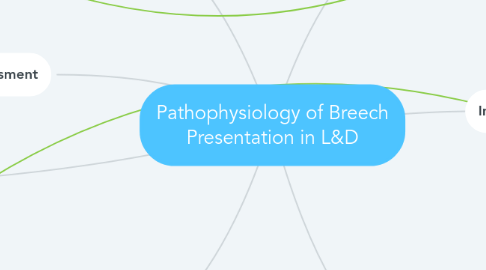Pathophysiology of Breech Presentation in L&D
저자: Devyn McNeil


1. Assess for associated conditions such as placenta previa, hydramnios, fetal anomalies, and multiple gestation, trail labour for 4-6 hrs
2. Evaluation
2.1. Evaluate: pt. pain management, fetal outcomes, maternal outcomes, pt. education
2.2. Evaluate need for RhoGAM, evaluate need for episiotomy, evaluate postpartum trauma and risk for hemorrhage
3. Assessment
3.1. Assess: FHR, presenting part, Pt. V/S, 10 P's (passegeway, passenger, powers, psychological response, position [maternal], philosophy, partners, patience, patient preparation, pain management)
4. Diagnosis
4.1. Medical
4.1.1. U/S, placement of fetal HS, Leopalds maneuvers
4.1.2. Abdomen: inspection, fundal grip, lateral grip, pelvic grip, FHS. Sonography, radiology.
4.2. Nursing
4.2.1. Risk for fetal distress, risk for anxiety in pt. or pt.s family
4.2.2. Risk for alteration in labour progress
